Vol. 75(9) May 2023 Editorial and Business Offices: Contact the Editor for subscription and advertisement information.

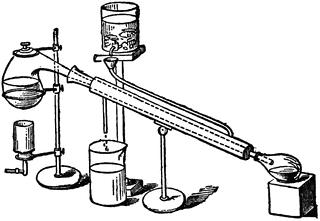
Editor: Connie Hendrickson: retort@acsdfw.org
Copy and Layout Editor: Lance Hughes: hugla64@gmail.com
Business
Martha Gilchrist: Martha.Gilchrist@tccd.edu
May 2023 The Southwest RETORT 1 SEVENTY-FIFTH YEAR May 2023 Published for the advancement of Chemists, Chemical Engineers and Chemistry in this area published by The Dallas-Fort Worth Section, with the cooperation of five other local sections of the American Chemical Society in the Southwest Region.
May,
the
Chemical Society, Inc.,
Manager:
The Southwest Retort is published monthly, September through
by
Dallas-Ft. Worth Section of the American
for the ACS Sections of the Southwest Region. SOUTHWESTRETORT
ContacttheDFWSection


General: info@acsdfw.org
Education: ncw@acsdfw.org
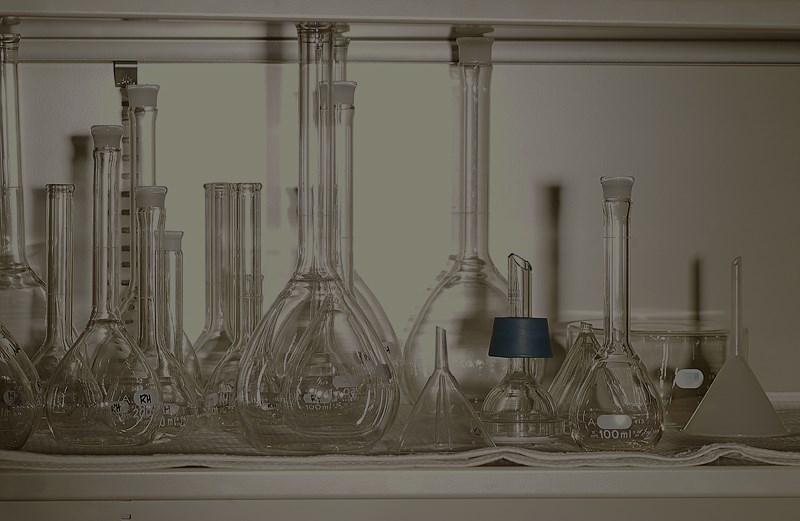
Elections:

candidates@acsdfw.org
Facebook: DFWACS Twitter:

May 2023 The Southwest RETORT 2
acsdfw TABLE OF CONTENTS ARTICLES and COLUMNS Letter from the Editor…..…..……..............18 NEWS SHORTS Pollen production could impact climate change by helping clouds form..……...…….5
Gluing’soft materials without glue (video).6 A touch-responsive fabric armband – for flexible keyboards, wearable sketchpads......7 Fermented coffee’s fruity aromas demystified………………..…....................….…..... .10 Modern origami method creates glass shapes by folding……………………………...........12 Human cells help researchers understand squid camouflage……………………...…...14 AROUND THE AREA UT Dallas…………………….……………..16 ACS LOCAL SECTION Meeting in Miniature…………………...…...8 INDEX OF ADVERTISERS Huffman Laboratories……………..…........3 TMJ Data Entry and Editing.………......…3 ANA-LAB…………………………...….…..4
‘
2022 DFW Section Officers
Chair: Mihaela C. Stefan
Chair-elect: Rajani Srinivasan
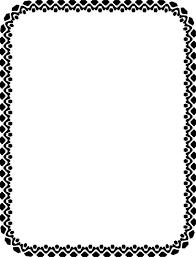
Past Chair: Trey Putnam
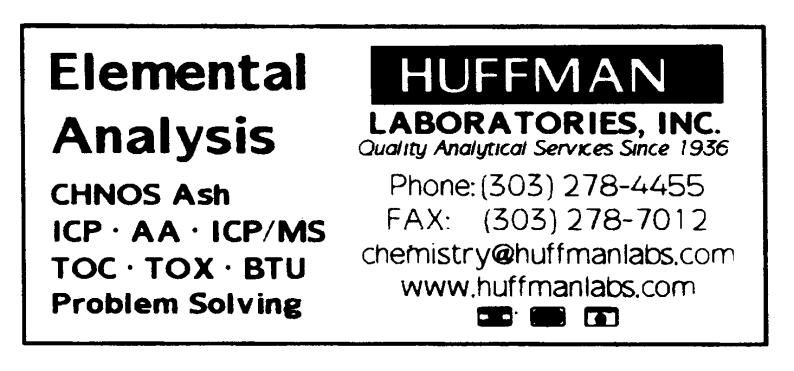
Treasurer: Martha Gilchrist
Secretary: Violeta Vega Gomez
Councilors:
MaryAnderson
Kirby Drake
Linda SchultzR
Rebecca Weber
Alternate Councilors:
Michael Bigwood
Daniela Hutanu
Danny Tran
May 2023 The Southwest RETORT 3 SERVICES
TMJ Data Entry and Editing Specializes in: • Company newsletters • Confidential Data Entry • Free Quotes Contact Lance at hugla64@gmail.com Or 214-356-9002
andANNOUNCEMENTS
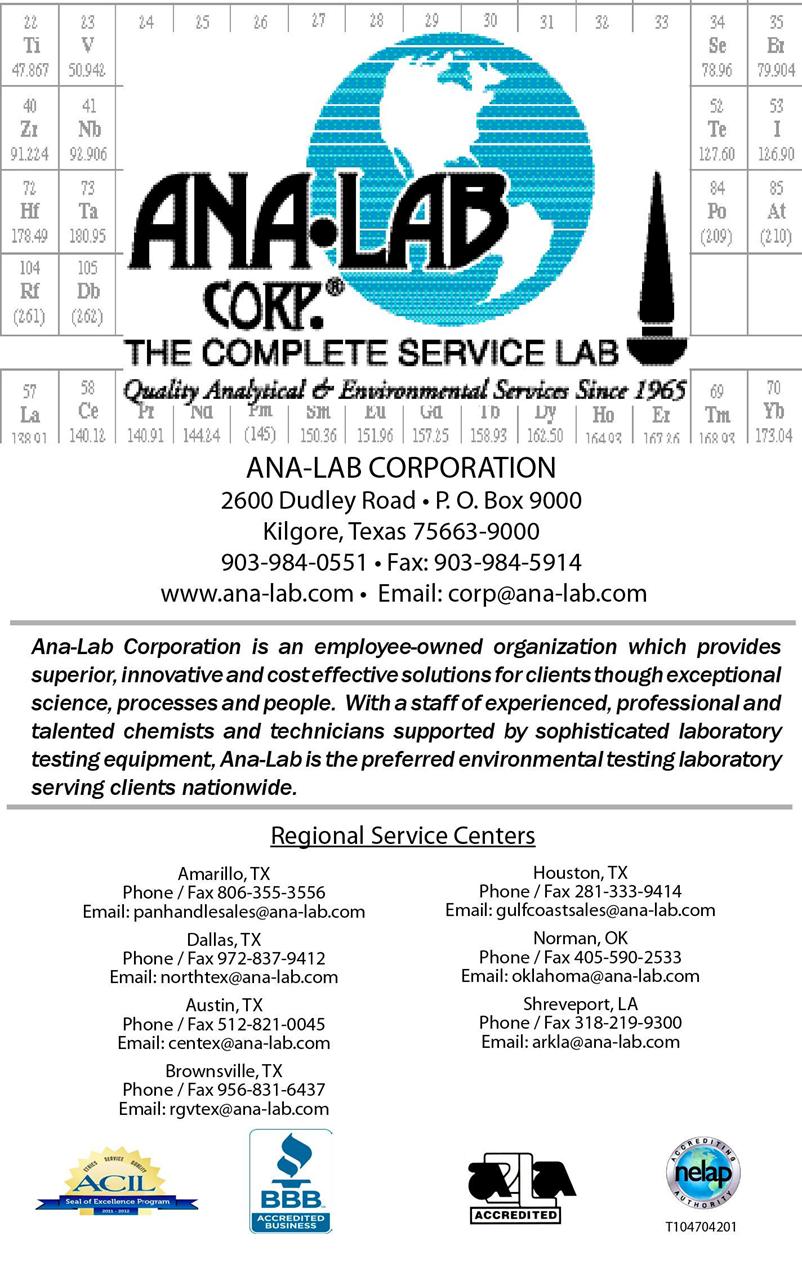
May 2023 The Southwest RETORT 4
From the ACS Press Room
“Pollen Emissions of Subpollen Particles and Ice Nucleating Particles
ACS Earth and Space Chemistry
For millions of people with seasonal allergies, springtime means runny noses, excessive sneezes and itchy eyes. And, as with many things, climate change appears to be making allergy season even worse. Researchers reporting in ACS Earth and Space Chemistry have shown that common allergen -producing plants ryegrass and ragweed emit more smaller, “subpollen particles” (SPPs) than once thought, yet climate would likely be most affected by their intact pollen grains, which can boost cloud formation.
In addition to annoying sinuses, pollen naturally functions as a way for plants to exchange genetic material and reproduce. When exposed to moisture, these pollen grains can burst into tiny SPPs less than a micron long. Their smaller size allows them to reach the lower respiratory system, where they can last longer and cause more inflammation than their larger counter-
parts. Both SPPs and whole pollen grains are also thought to act as ice nucleation sites miniature starting points for clouds. But compared to regular clouds, SPPs and pollen form smaller, more numerous clouds that tend to hold onto their precipitation, helping trap in radiant heat and contributing to climate change. In turn, higher temperatures can extend pollen-release periods, further exacerbating the problem. Previously, Brianna Matthews, Alyssa Alsante and Sarah Brooks studied how oak trees emit SPPs at different humidity levels. But this time, the team wanted to investigate how two other common allergen-producing plants, ragweed and ryegrass, release SPPs under humid conditions, and how those particles could affect ice cloud formation.
The researchers collected samples of ryegrass and ragweed, then placed them into a specialized “pollen chamber.” There, the samples were exposed to different humidity levels and bursts of wind over several hours to simulate real-world conditions.
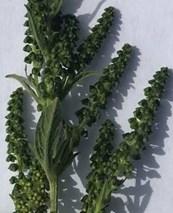
Adapted from ACS Earth and Space Chemistry, 2023, DOI: 10.1021/ acsearthspacechem.3c00014
The group assessed the number of SPPs per pollen grain, as well as the abilities of both to nucleate ice. Surprisingly, the team found that previous experiments on the same types of plants underestimated the amount of SPPs by a factor of 10 to 100. This was likely because the other experiments used a less realistic means of spreading the pollen and gen-
Continued on page 16
May 2023 The Southwest RETORT 5
Pollen production could impact climate change by helping clouds form
”
Pollen from plants, such as ragweed (pictured here), could affect climate by helping clouds form.
From the ACS Press Room
‘Gluing’ soft materials without glue (video)
“Universal Way to “Glue” Capsules and Gels into 3D Structures by Electroadhesion”
ACS Applied Materials & Interfaces
If you’re a fan of arts and crafts, you’re likely familiar with the messy, sticky, frustrationinducing nature of liquid glues. But researchers reporting in ACS Applied Materials & Interfaces now have a brand-new way to weld squishy stuff together without the need for glue at all. They’ve demonstrated a universal, “electroadhesion” technique that can adhere soft materials to each other just by running electricity through them. Watch a video of the method in action here.
Youtube ID: QMSWC1Egn1A
There’s a glue out there for almost any situation, whether it involves plastic, fabric, wood or beyond. But things get a bit tricky when materials are soft and squishy, like tissues or engineered organs. Strategies including 3Dprinting avoid glues altogether by fusing together an entire structure such as an organ all at once. But this can be slow and laborious, and require advanced technical equipment. Another alternative could be electroadhesion, in which an electric field is used to hold oppositely charged materials together, forming attachments between the materials’ components. This can involve chemical bonds, like ionic bonds, or more physical connections, like ensnaring polymer chains together. Plus, it works with little more than a household battery and pencil lead. Previously, Srinivasa Raghavan and colleagues showed that electroadhesion could reversibly
hold a gel to a tissue without the need for sutures. But now, they wanted to see if the technique could work for any two materials, given that they had opposite charges, to precisely and reversibly hold them together.
To explore the phenomenon, the team tested a gel in addition to three types of capsules made of alginate or chitosan both naturally occurring polymers that were either positively or negatively charged. When attached to graphite electrodes and exposed to a 10-V electric field for around 10 seconds, the oppositely charged materials stuck together. This bond was strong enough to withstand gravity, and evidence from previous experiments suggests it could last for years. By reversing the flow of electricity, however, the bond was easily broken. The team assembled chains and even 3D cubes out of individual, spherical capsules. The researchers also used electroadhesion to sort capsules by their charges, either by laying a charged gel on top of several capsules, or by touching them with a fingertip “robot” that adhered the capsules to themselves. The researchers say that this work demonstrates the universality of electroadhesion and could one day be used in robotics and tissue engineering.
The authors acknowledge funding from the Clark Fellowship Foundation, a GAANN Fellowship and the TEDCO Maryland InnovationInitiative.
May 2023 The Southwest RETORT 6
From the ACS Press Room
A touch-responsive fabric armband – for flexible keyboards, wearable sketchpads
“Skin-Friendly and Wearable Iontronic Touch Panel for Virtual-Real Handwriting Interaction

ACS Nano
It's time to roll up your sleeves for the next advance in wearable technology – a fabric armband that’s actually a touch pad. In ACS Nano, researchers say they have devised a way to make playing video games, sketching cartoons and signing documents easier. Their proof-of-concept silk armband turns a person’s forearm into a keyboard or sketchpad. The three-layer, touch-responsive material interprets what a user draws or types and converts it into images on a computer.
Computer trackpads and electronic signature -capture devices seem to be everywhere, but they aren’t as widely used in wearables. Researchers have suggested making flexible touch-responsive panels from clear, electrically conductive hydrogels, but these substances are sticky, making them hard to write on and irritating to the skin. So, Xueji Zhang, Lijun Qu, Mingwei Tian and colleagues wanted to incorporate a similar hydrogel into a comfortable fabric sleeve for drawing or playing games on a computer.
The researchers sandwiched a pressuresensitive hydrogel between layers of knit silk. The top piece was coated in graphene nanosheets to make the fabric electrically conductive. Attaching the sensing panel to electrodes and a data collection system produced a pressure-responsive pad with real-
time, rapid sensing when a finger slid over it, writing numbers and letters. The device was then incorporated into an arm-length silk sleeve with a touch-responsive area on the forearm. In experiments, a user controlled the direction of blocks in a computer game and sketched colorful cartoons in a computer drawing program from the armband. The re-
When
Adapted from ACS Nano 2023, DOI: 10.1021/ acsnano.2c12612
searchers say that their proof-of-concept wearable touch panel could inspire the next generation of flexible keyboards and wearable sketchpads.
The authors acknowledge funding from the National Key Research and Development Program, Taishan Scholar Program of Shandong Province in China, Shandong Province
Continued on page 16
May 2023 The Southwest RETORT 7
”
A person’s right index finger is touching their left forearm covered by a black band. In the background, there is a computer screen displaying a drawing program and a cartoon panda bear.
a person draws a panda on this touch-responsive armband that’s worn on their forearm (bottom right of photo), it shows up on a computer.
Meeting in Miniature

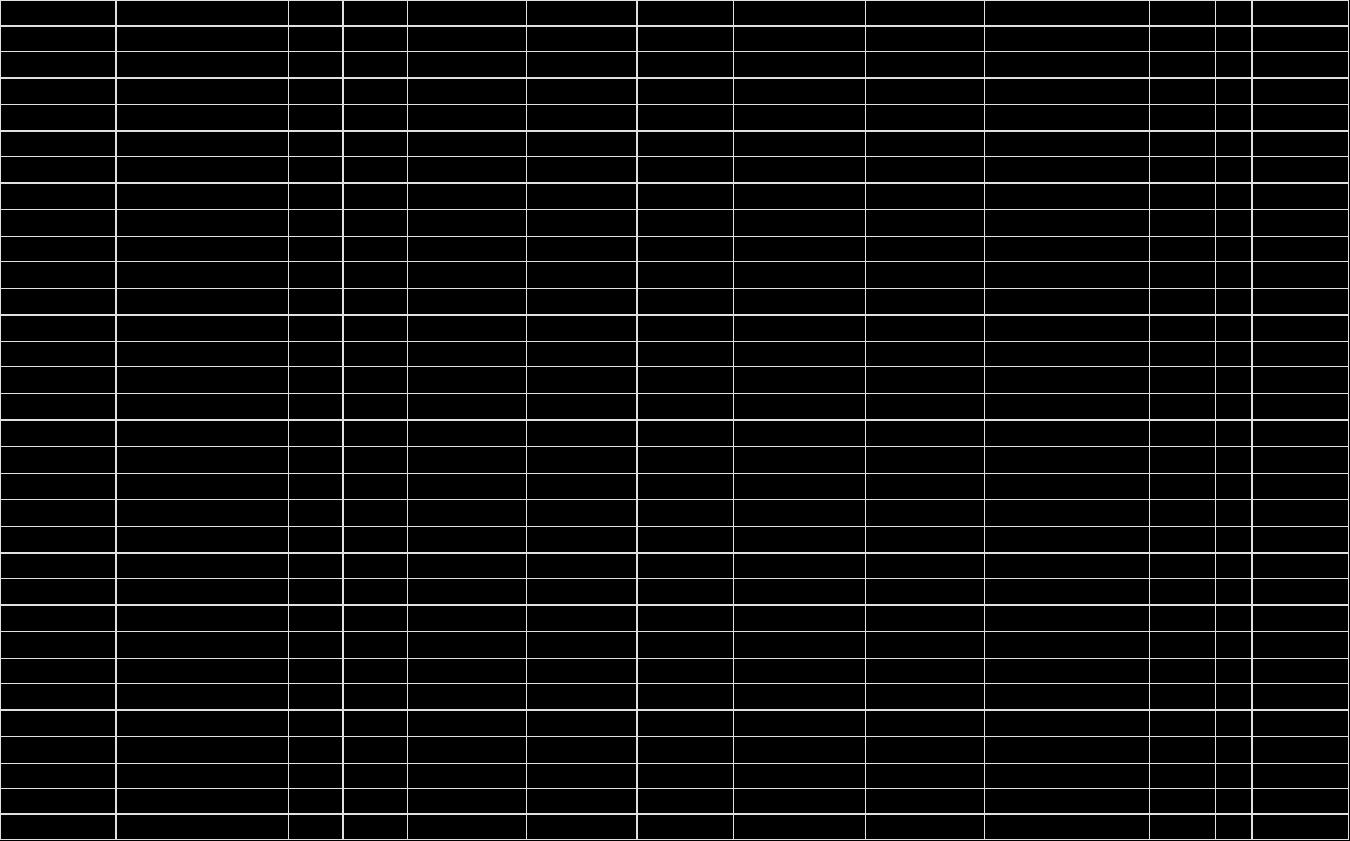
We had almost 70 presenters, compared to about 100 at UTD last year. Counting judges, TSU student helpers, and other registrants, we had over a hundred attendees. Once we found the cord to the coffee pot, things settled down. Dr. Wood from Baylor was a fantastic speaker. Lunch was a bit of a zoo, but I had no complaints. A large crowd stayed all the way to the Awards Ceremony, which was very lively. Most importantly, all of the students seemed to have a good time...Dr.LindaSchultz

May 2023 The Southwest RETORT 8
National Exam Honors List
While the Dallas/Fort Worth Section did not have any students make it to Study Camp this year, two of our students earned spots on the Honors list. That puts them in the top 10% of all students completing the National Exam. Here they are:


Student School Teacher
Mahesh Venkat Frisco High School Elyse Wudeck
Andrew Cai Texas Academy of Mathematics and Science Francine Hazy
Congratulations to these students! The Dallas/Fort Worth Section will be doing this all again in Spring 2024.
May 2023 The Southwest RETORT 9
Fermented coffee’s fruity aromas demystified From the ACS Press Room
INDIANAPOLIS, March 29, 2023 Specialty coffees are gaining traction in coffeehouses around the world and now a fermented version could bring a fruity taste to your morning cup of joe. This new kind of beverage has a raspberry-like taste and aroma, but what causes these sensations has been a mystery. Today, scientists report six compounds that contribute to the fermented coffee experience. The work could help increase production of the drink and make it more readily available for everyone to enjoy.
The researchers will present their results at the spring meeting of the American Chemical Society (ACS). ACS Spring 2023 is a hybrid meeting being held virtually and inperson March 26–30, and features more than 10,000 presentations on a wide range of science topics.
“There are now flavors that people are creating that no one would have ever associated with coffee in the past,” says Chahan Yeretzian, Ph.D., the project’s principal investigator. “The flavors in fermented coffee, for example, are often more akin to fruit juices.”
This unusual type of beverage provides a unique flavor experience for consumers, and the growing demand for it means that fermented coffee beans can fetch a high price, potentially benefiting farmers. And the process by which the beans are prepared requires much less water than traditional methods, making it a more environmentally friendly alternative to a standard cup of coffee.

But despite this drink’s growing popularity, the compounds that cause its distinctive flavor were unknown. And with fermented coffee becoming more popular in competitive events, some people have been concerned that the lack of knowledge about fermented coffee may make it difficult to distinguish between the genuine product and regular joe that has been illicitly adulterated. So, Yeretzian and colleagues from the Coffee Excellence Center at Zurich University of Applied Sciences sought to identify the compounds that are responsible for these new and exciting flavors. And because flavor and smell are intimately linked, studying the beverages’ scents could help the team gain a better understanding of how fermented coffee’s complex flavor is created.
Identifying the compounds that give fermented coffee, pictured brewing here, its unique flavor and aroma could allow more people to enjoy it.
Samo Smrke
To single out the compounds unique to fermented coffee’s aromas, researchers took arabica beans and divided them into three groups. One was prepared using a wash process, which is likely how your average afternoon pick-me-up brew is made. Here, a gelatinous substance known as mucilage is stripped from the
May 2023 The Southwest RETORT 10
From the ACS Press Room
coffee bean, which is washed with water before being dried. The researchers prepared the second group using the pulped natural process another common approach in which the skin is removed from the bean, but the mucilage is left intact. Finally, the team fermented beans in the third group using carbonic maceration, a process often used in winemaking. This method was first introduced to the specialty coffee world in 2015, when the winning contestant in the World Barista Championship used it to prepare their entry. With this process, whole coffee fruits are fermented in stainless steel tanks and infused with carbon dioxide to lower the pH of the fermentation. Unlike the other brews, the coffee made with fermented beans was described as smelling intense, like raspberries with a hint of rose.
Next, the researchers brewed coffee using each type of bean and analyzed the samples with gas chromatography (GC) sniffing, also called GC olfactometry. First, the GC instrument separated individual components in the air above each sample. Then, as the compounds left the instrument, they went to a mass spectrometer for identification, and to someone sitting at the outlet to describe what they smelled.
“Because the chemical signature doesn’t tell us how a compound smells, we have to rely on the human nose to detect the scent as each compound comes out of the chromatography instrument individually,” says Yeretzian. This methodology can be tricky because there is a subjective element to it. “We’re using people to detect scents, and everybody perceives flavors a little differently,” says Samo Smrke,
Ph.D., a research associate in the lab who is presenting the results. “But in this case, the panel was very consistent in the smells they described. So, what is traditionally considered a challenge was actually not an issue because the aromas were so clear.”
There is one major advantage to GC sniffing. The human nose can sometimes detect scents from compounds that are at such a low concentration, they’re unable to be picked up by mass spectrometry. In this case, although six compounds appeared to contribute to the intense fruity flavor and the raspberry scent of the fermented coffee, the team was only able to identify three of them: 2-methylpropanal, 3-methylbutanal and ethyl 3methylbutanoate.
In the future, the researchers hope to identify the remaining compounds, as well as judge the intensity of different flavors and scents. Additionally, the researchers would like to know more about how these unique compounds form. Potential factors include farming practices, the variety of coffee beans, the microclimate of specific farms and the microbes present during fermentation. “There’s still quite a lot of unknowns surrounding this process,” says Smrke. A better understanding of the sources of these compounds could help the team standardize production methods, making it easier to produce fermented coffee at larger scales and allowing even more people to enjoy this distinctive flavor.
The researchers acknowledge support and funding from Project Origin Australia and Zurich University ofApplied Sciences.
May 2023 The Southwest RETORT 11
From the ACS Press Room
Modern origami method creates glass shapes by folding

INDIANAPOLIS, March 28, 2023 The ancient art of origami is well known for transforming sheets of paper and other foldable materials into complex 3D shapes. But now, chemical engineers have extended the centuries-old practice to produce intricate shapes made of glass or other hard materials. Their thoroughly modern method, which can be combined with 3D printing, could have applications ranging from sculpture to catalysis and beyond.
says Tao Xie, Ph.D., the project’s principal investigator.
Typically, glass and ceramics are shaped in a mold or are 3D printed in the desired final structure. But a mold can’t produce a complicated shape, Xie says. And although 3D printing can do so, it’s slow, and an object can be flimsy and need extra support while it’s being made. In addition, the printed item usually has a layered texture that might not be the ideal appearance. The team set out to see if they could overcome these shortcomings.
Yang Xu, a graduate student who works in Xie’s lab at Zhejiang University, devised a technique in which she mixed nanoparticles of silica the main ingredient for making glass into a liquid containing several compounds. Curing the mixture with ultraviolet light produced a cross-linked polycaprolactone polymer with tiny beads of silica suspended in it, like raisins in raisin bread.
The researchers will present their results today at the spring meeting of the American Chemical Society (ACS). ACS Spring 2023 is a hybrid meeting being held virtually and in-person March 26–30, and features more than 10,000 presentations on a wide range of science topics.
In earlier work, the researchers used origami and the related technique of kirigami which combines cutting with folding to shape soft materials made of polymers. “But we wanted to extend these techniques to glass and ceramics, which are much harder to process into complex shapes than polymers,”
Next, Xu cut, folded, twisted and pulled on sheets of this translucent polymer composite, which has mechanical properties similar to paper, to make a crane, a feather, a lacy vase and a sphere made of intertwined ribbons, among other objects. If she did this at room temperature, the composite retained its new shape fairly well throughout the remaining production steps. Xu discovered that’s because the folding and stretching process irreversibly disrupts the interface between some of the silica particles and the polymer matrix. But if it’s critical to fully retain the new
May 2023 The Southwest RETORT 12
Intricate glass designs (left) can be made with origami and cutting techniques, which can be combined with 3D printing to make more complex shapes, such as a 3D lattice (right). Scale bar 1 cm.
Yang Xu
From the ACS Press Room
shape during the subsequent steps, Xu found that the composite must be heated at about 265 F when it is folded and stretched. That permanently rearranges the links between the polymer chains, firmly fixing the new shape in place.

A subsequent heating step at more than 1,100 F removes the polycaprolactone polymer from the object and turns it opaque. After cooling, a third heating step, known as sintering, melts the silica particles together at temperatures topping 2,300 F to convert the object into clear glass with a smooth, nonlayered texture. Achieving that full transparency turned out to be the project’s biggest challenge. Including more polymer in the mix made the objects easier to fold but reduced their final transparency, explains Xu, who is presenting the work at the meeting. She ultimately found the right concentrations of polymer and silica to successfully compromise between those competing priorities.
In her latest work, Xu is extending the method beyond glass to ceramics, replacing the silica with substances such as zirconium dioxide and titanium dioxide. Whereas glass is brittle and inert, these compounds open up the possibility of producing “functional” objects, such as materials that are less fragile than glass or that have catalytic properties. The group is also experimenting with a combination of kirigami and 3D printing to make even more complex shapes. “When you fold a piece of paper, the level of complexity is somewhat limited, and 3D printing is kind of slow,” Xie says. “So we wanted to see if we could combine these two techniques to take
advantage of their attractive attributes. That would give us the freedom to make almost any shaped part.”
In the catalyst field, Xie notes, people use 3D printing to make ceramic structures perforated with microscopic channels, which increase a catalyst’s exposed surface area. Xu’s method could enable more intricate designs for such applications, and as a test case, she has printed a pierced 3D lattice made of the silica-polymer composite (red structure in accompanying image).
Xu notes that her process could be automated for large-scale manufacturing. She and Xie hope the ceramics and artistic communities will learn about the work and apply it in catalyst and sculpture design, as well as other purposes the researchers haven’t even thought of yet.
The researchers acknowledge support and funding from the National Natural Science Foundation of China.
May 2023 The Southwest RETORT 13
From the ACS Press Room
Human cells help researchers understand squid camouflage
INDIANAPOLIS, March 27, 2023
Squids and octopuses are masters of camouflage, blending into their environment to evade predators or surprise prey. Some aspects of how these cephalopods become reversibly transparent are still “unclear,” largely because researchers can’t culture cephalopod skin cells in the lab. Today, however, researchers report that they have replicated the tunable transparency of some squid skin cells in mammalian cells, which can be cultured. The work could not only shed light on basic squid biology, but also lead to better ways to image many cell types.
The researchers will present their results at the spring meeting of the American Chemical Society (ACS). ACS Spring 2023 is a hybrid meeting being held virtually and in-person March 26–30, and features more than 10,000 presentations on a wide range of science topics.
For many years, Alon Gorodetsky, Ph.D., and his research group have been working on materials inspired by squid. In past work, they developed “invisibility stickers,” which consisted of bacterially produced squid reflectin proteins that were adhered onto sticky tape. “So then, we had this crazy idea to see whether we could capture some aspect of the ability of squid skin tissues to change transparency within human cell cultures,” says Gorodetsky, who is the principal investigator on the project.
The team at the University of California, Irvine focused their efforts on cephalopod cells called leucophores, which have particulate-
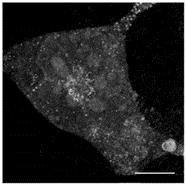
like nanostructures composed of reflectin proteins that scatter light. Typically, reflectins clump together and form the nanoparticles, so light isn’t absorbed or directly transmitted; instead, the light scatters or
Adapted fromACS Biomaterials Science & Engineering, 2023, DOI: 10.1021/acsbiomaterials.2c00088
bounces off of them, making the leucophores appear bright white.
“We wanted to engineer mammalian cells to stably, instead of temporarily, form reflectin nanostructures for which we could better control the scattering of light,” says Gorodetsky. That’s because if cells allow light through with little scattering, they’ll seem
May 2023 The Southwest RETORT 14
By incorporating squid proteins in mammalian cells, researchers could tune the cells’transparency from clear to cloudy (scale bar is 10 µm).
From the ACS Press Room
more transparent. Alternatively, by scattering a lot more light, cells will become opaque and more apparent. “Then, at a cellular level, or even the culture level, we thought that we could predictably alter the cells’ transparency relative to the surroundings or background,” he says.
To change how light interacts with cultured cells, Georgii Bogdanov, a graduate student in Gorodetsky’s lab who is presenting the results, introduced squid-derived genes that encoded for reflectin into human cells, which then used the DNA to produce the protein. “A key advance in our experiments was getting the cells to stably produce reflectin and form light-scattering nanostructures with relatively high refractive indices, which also allowed us to better image the cells in three dimensions,” says Bogdanov.
In experiments, the team added salt to the cells’ culture media and observed the reflectin proteins clumping together into nanostructures. By systematically increasing the salt concentration, Bogdanov got detailed, time-lapse 3D images of the nanostructures’ properties. As the nanoparticles became larger, the amount of light that bounced off the cells increased, consequently tuning their opacity.
Then, the COVID-19 pandemic hit, leaving the researchers to wonder what they could do to advance their investigation without being physically in the lab. So, Bogdanov spent his time at home developing computational models that could predict a cell’s expected light scattering and transparency before an experiment was even run. “It’s a beautiful loop between theory and experiments, where you feed in design parameters for the reflectin
nanostructures, get out specific predicted optical properties and then engineer the cells more efficiently for whatever lightscattering properties you might be interested in,” explains Gorodetsky.
On a basic level, Gorodetsky suggests that these results will help scientists better understand squid skin cells, which haven’t been successfully cultured in a laboratory setting. For example, previous researchers postulated that reflectin nanoparticles disassemble and reassemble to change the transparency of tunable squid leucophores. And now Gorodetsky’s team has shown that similar rearrangements occurred in their stable engineered mammalian cells with simple changes in salt concentration, a mechanism that appears analogous to what has been observed in the tunable squid cells.
The researchers are now optimizing their technique to design better cellular imaging strategies based on the cells’ intrinsic optical properties. Gorodetsky envisions that the reflectin proteins could act as genetically encoded tags that would not bleach inside human cells. “Reflectin as a molecular probe provides a lot of possibilities to track structures in cells with advanced microscopy techniques,” adds Bogdanov. For example, the scientists propose that imaging approaches based on their work could also have implications for better understanding cell growth and development.
The researchers acknowledge funding from the Defense Advanced Research Projects Agency and the U.S. Air Force Office of Scientific Research.
May 2023 The Southwest RETORT 15
Around the Area
UTD

Assistant Professor and CPRIT Scholar
Dr. Filippo “Filo” Romiti was awarded a three-year research grant from the Robert A. Welch Foundation. Professor Jie Zheng has been appointed a Distinguished Chair in Natural Sciences and Mathematics. Recipients of the School of Natural Sciences and Mathematics Annual Teaching Awards for Tenured, Tenure-Track, and Professor of Instructors are Professor Bruce Novak, Assistant Professor Hedieh Torabifard, and Dr. Zohreh Hashami, respectively – all from the Department of Chemistry & Biochemis-
A Huge Thank You!
Many thanks to all who registered for the Fort Worth Life Sciences Coalition’s April 27, 2023 Zoom event ‘Hot Topics in Venom’.
Dr. Spencer Greene’s talk, 'Myths and Misconceptions in the Management of Snakebites’ was informative and highly entertaining - we hope you enjoyed it.
Dr. Stephen P. Mackessy’s recorded presentation, ‘Evolution and Diversification of Snake Venom Toxins and Venom Glands’ is a fascinating look at the physiology of venomous snakes and the biochemistry of venoms. Here is the link to the talk in case you missed it last month: https://www.youtube.com/ watch?v=mSkgitjnv8I
Speaker bios and links to Dr. Mackessy’s youtube video are available via www.fwlsc.org .
From ACS Press Room
Continued
Pollen production could impact climate change
Continued from page 5
erating the SPPs, say the researchers. Ragweed and ryegrass SPPs were very poor icenucleating sites, however barely better than plain water while whole pollen grains facilitated cloud growth. The researchers say that these updated parameters and numbers of emitted pollen grains and particles could ultimately be used to create more-accurate climate models.
The authors acknowledge funding from the National Science Foundation
A touch-responsive fabric armband
Continued from page 7
Key Research and Development Plan, Shandong Provincial Universities Youth Innovation Technology Plan Team, National Natural Science Foundation of China, Natural Science Foundation of Shandong Province of China, and the Opening Fund of China National Textile and Apparel Council Key Laboratory of Flexible Devices for Intelligent Textile and Apparel at Soochow University.
May 2023 The Southwest RETORT 16
Instructional Lab Supervisor, Chemistry
Staff position to supervise instructional labs and instrumentation in the University of North Texas Chemistry Department. Start date negotiable; preferred start in July 2023.
Employer/Institution: University of North Texas
Salary: Salary commensurate with experience
Location: Denton, TX
The Chemistry Department at the University of North Texas (UNT) is seeking to hire an Instructional Lab Supervisor, to begin in July 2023. This position is responsible for supervising and maintaining the physical facilities and instrumentation in the General Chemistry and other assigned instructional laboratories in the Department of Chemistry. Applicants should have a Master’s Degree in Chemistry or a related field and two years of relevant experience; or any equivalent combination of education, training and experience. The staff member will work with a team of three other Instructional Lab Supervisors in overseeing our various Chemistry laboratory courses, which serve over 4000 students each year.

UNT is a Carnegie R1 research university and a federally designated Hispanic-Serving Institution, with a diverse population of over 40,000 students. We are located in Denton, a vibrant community that combines a small-town feel with abundant arts and culture, as well as close proximity to the thriving cities of Dallas and Fort Worth (each 30 miles away).
Link to apply to this position:
https://jobs.untsystem.edu/postings/71895
May 2023 The Southwest RETORT 17
From the Editor

Congratulations to the Meeting-in-Miniature winners. According to Dr. Linda Schultz, it was a great meeting and everyone had a good time…after they found the cord to the coffee pot! Lucky they found it...things could have gotten serious. And Give a nice round of applause to the two students who made the Honors List for the National Chemistry exam and their teachers:
Mahesh Venkat of Frisco High School and teacher Elyse Wudeck
Andrew Cai of Texas Academy of Mathematics and Science and teacher Francine
Last call!...It always surprises me when we hit the last issue of the academic year. Everyone have a great summer.
May 2023 The Southwest RETORT 18
Hazy
























